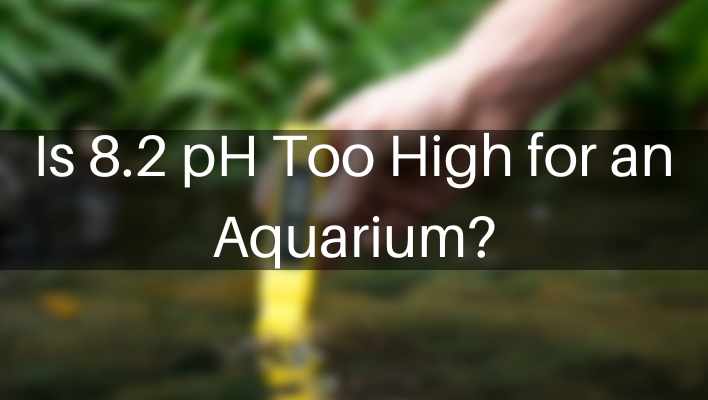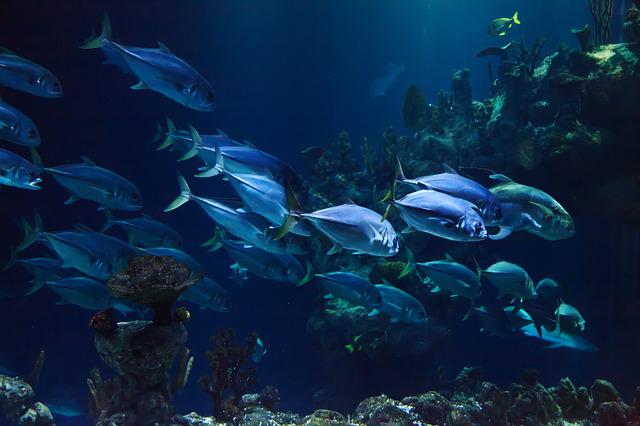Originally posted on May 16, 2023 @ 3:00 pm
Last Updated on 3 months by admin
If you’re an aquarium enthusiast, you know that maintaining the perfect balance of water chemistry is essential for the health and well-being of your aquatic pets. One crucial factor to consider is the pH level of the water. But what happens when the pH level is too high, specifically 8.2? Is it harmful to your aquarium inhabitants? Let’s dive in and explore this topic further.
Firstly, it’s important to understand that pH is a measure of the acidity or alkalinity of water, and it’s measured on a scale of 0 to 14. A pH of 7 is considered neutral, while anything below 7 is acidic, and anything above 7 is alkaline or basic. Generally, the ideal pH range for most aquariums is between 6.5 and 7.5. However, if the pH levels in your aquarium water rise to 8.2 or higher, it can have adverse effects on your aquatic pets.
Is 8.2 pH Too High for Aquarium?
Yes, 8.2 pH is considered too high for most aquariums. This high pH value can cause stress and harm to your fish and other aquatic creatures. The ideal pH range for most freshwater aquariums is between 6.8 and 7.8, while for saltwater aquariums, it should be between 7.8 and 8.3. To lower the pH level in your aquarium, you can use pH-lowering products or natural methods like adding driftwood or peat moss to the water.

Is 8.2 pH Too High for Aquarium?
Maintaining a healthy environment for your aquarium is crucial for the well-being of your fish and other aquatic creatures. One of the most important factors to consider is the pH level of the water. It is important to maintain the right pH level to ensure the survival and growth of your fish. When it comes to pH, there is a lot of confusion around what is considered high or low. In this article, we will explore whether 8.2 pH is too high for an aquarium.
The Ideal pH Level for Aquariums
The ideal pH level for most freshwater aquariums is between 6.5 and 7.5. However, some fish species require a specific pH level to thrive. For example, African cichlids require a pH level between 7.8 and 8.6. It is important to research the specific pH requirements of the fish species in your aquarium before determining the ideal level.
Benefits of Maintaining the Ideal pH Level
Maintaining the ideal pH level in your aquarium is crucial for the health and well-being of your fish. A stable pH level helps to prevent stress, disease, and other health issues. It also promotes healthy growth and reproduction of your fish.
Risks of High pH Levels
A pH level that is too high can be harmful to your fish. High pH levels can cause stress, which can make your fish more susceptible to disease. It can also affect the balance of beneficial bacteria in your aquarium, which can lead to an increase in harmful bacteria.
How to Lower pH Levels
If your pH level is too high, there are several ways to lower it. One way is to add driftwood to your aquarium, which will release tannins that can lower the pH level. You can also use pH lowering products, such as pH buffers or acidifiers. However, it is important to be careful when using these products, as they can lower the pH level too quickly and harm your fish.
Benefits of a High pH Level
While a high pH level can be harmful to some fish species, it can be beneficial to others. For example, African cichlids require a high pH level to thrive. A high pH level can also help to prevent the growth of harmful bacteria in your aquarium.
When is a High pH Level Too High?
While a high pH level can be beneficial to some fish species, it is important to monitor the pH level to ensure it does not become too high. A pH level above 8.2 can be harmful to most fish species and should be avoided.
Vs. Low pH Levels
A low pH level can also be harmful to your fish. It can cause stress, which can make your fish more susceptible to disease. It can also affect the growth and reproduction of your fish.
How to Test pH Levels
Testing the pH level of your aquarium is easy and can be done using a pH test kit. These kits are available at most pet stores and online. It is important to test the pH level regularly to ensure it remains within the ideal range for your fish species.
The Bottom Line
Maintaining the ideal pH level in your aquarium is crucial for the health and well-being of your fish. While some fish species require a high pH level, most freshwater aquariums should aim for a pH level between 6.5 and 7.5. If your pH level is too high, there are several ways to lower it, but it is important to be cautious and monitor the pH level regularly. Testing the pH level of your aquarium is easy and should be done regularly to ensure the health of your fish.
Frequently Asked Questions
Here are some common questions about the ideal pH level for aquariums.
Is 8.2 pH too high for aquarium?
Yes, a pH level of 8.2 is too high for most aquariums. Most fish and plants prefer a pH level between 6.5 and 7.5. A pH level above 8.0 can cause stress and harm to your aquatic pets. High pH levels can also cause the water to become too alkaline, which can lead to the growth of harmful bacteria and microorganisms.
If your aquarium has a pH level of 8.2, you should take steps to lower it. This can be done by adding pH-lowering chemicals or using natural methods such as adding driftwood or peat moss to the water. It’s important to monitor the pH level regularly to ensure it stays within a safe range for your aquatic pets.
What are the dangers of high pH levels in aquariums?
High pH levels can cause a variety of problems in aquariums. Fish and plants may become stressed or even die if the pH level is too high. High pH levels can also cause the water to become too alkaline, which can lead to the growth of harmful bacteria and microorganisms. These microorganisms can cause diseases and infections in your aquatic pets.
In addition, high pH levels can make it difficult for your aquatic pets to absorb nutrients from their food. This can lead to malnutrition and other health problems. It’s important to monitor the pH level in your aquarium regularly and take steps to lower it if it becomes too high.
What is the ideal pH level for freshwater aquariums?
The ideal pH level for most freshwater aquariums is between 6.5 and 7.5. This range is suitable for most fish and plants and will help ensure their health and well-being. However, some species of fish and plants may require a slightly different pH level. It’s important to research the specific needs of your aquatic pets to determine the ideal pH level for your aquarium.
If the pH level in your aquarium is outside of the ideal range, you should take steps to adjust it. This can be done using pH-lowering or pH-raising chemicals, or by using natural methods such as adding driftwood or limestone to the water.
How can I lower the pH level in my aquarium?
There are several ways to lower the pH level in your aquarium. One method is to use pH-lowering chemicals, which are available at most pet stores. Another method is to use natural materials such as driftwood or peat moss, which can help lower the pH level over time. These materials release tannins into the water, which can help to acidify it.
You can also lower the pH level by adding distilled or reverse osmosis water to your aquarium. These types of water have a lower pH level than tap water. It’s important to monitor the pH level regularly and make adjustments as needed to ensure it stays within a safe range for your aquatic pets.
Can high pH levels cause algae growth in aquariums?
Yes, high pH levels can contribute to algae growth in aquariums. Algae thrives in alkaline water, which is often caused by high pH levels. Algae growth can be unsightly and can also cause problems for your aquatic pets by reducing the oxygen levels in the water.
To prevent algae growth, it’s important to maintain a balanced pH level in your aquarium. This can be done by monitoring the pH level regularly and taking steps to lower it if it becomes too high. You can also reduce the amount of light your aquarium receives, as algae requires light to grow.

Aquarium PH Level is Too High? Too Low
In conclusion, maintaining the right pH level is crucial for the health of your aquarium inhabitants. While a pH of 8.2 is on the higher side, it may not necessarily harm your fish and plants. However, it’s important to regularly monitor the pH and take necessary steps to adjust it if needed.
One way to lower the pH is by adding driftwood or peat moss to the aquarium. You can also use pH-lowering chemicals, but it’s important to follow the instructions carefully and not make drastic changes too quickly.
Ultimately, the ideal pH level for your aquarium will depend on the specific needs of your aquatic life. By staying vigilant and making adjustments as needed, you can ensure a thriving and healthy aquarium ecosystem.
